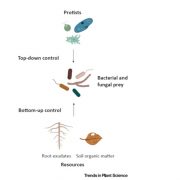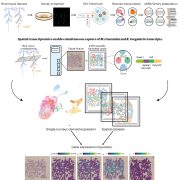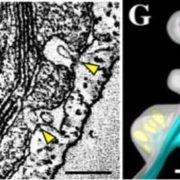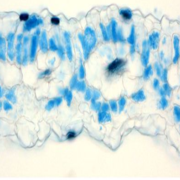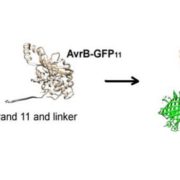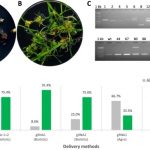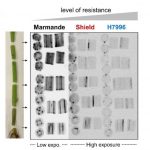Medicago-Sinorhizobium-Ralstonia co-infection reveals legume nodules as pathogen confined infection sites developing weak defenses (Curr. Biol.)
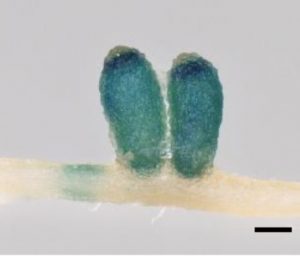 The pathogenic bacterium Ralstonia solanacearum enters roots through wounds and also at root tips. It can also infect legume nodules. Benezech et al. investigated how this infection occurs, and how it is affected by and affects nitrogen fixation. The authors found that nodules are as permissive of Ralstonia infection as root tips, and that this infection is not diminished by nitrogen fixation. Optimal pathogen growth in the nodules depends on the presence of the type-III secretion system, the structure though which bacteria introduce effector proteins into their hosts. This finding suggest that the nodule tissues mount a defense against the pathogen, which was supported by transcriptomic data. These data also show that the defense response in nodules is weaker and distinct from that of root tissue. Interestingly, the increased susceptibility of nodules to infection is counter-balanced by an unknown system that prevents dissemination of bacteria, both symbiotic and pathogenic, from the nodules and into the root system. (Summary by Mary Williams) Curr. Biol. 10.1016/j.cub.2019.11.066
The pathogenic bacterium Ralstonia solanacearum enters roots through wounds and also at root tips. It can also infect legume nodules. Benezech et al. investigated how this infection occurs, and how it is affected by and affects nitrogen fixation. The authors found that nodules are as permissive of Ralstonia infection as root tips, and that this infection is not diminished by nitrogen fixation. Optimal pathogen growth in the nodules depends on the presence of the type-III secretion system, the structure though which bacteria introduce effector proteins into their hosts. This finding suggest that the nodule tissues mount a defense against the pathogen, which was supported by transcriptomic data. These data also show that the defense response in nodules is weaker and distinct from that of root tissue. Interestingly, the increased susceptibility of nodules to infection is counter-balanced by an unknown system that prevents dissemination of bacteria, both symbiotic and pathogenic, from the nodules and into the root system. (Summary by Mary Williams) Curr. Biol. 10.1016/j.cub.2019.11.066


